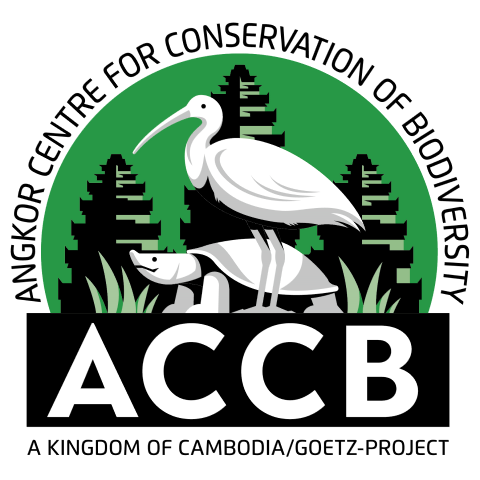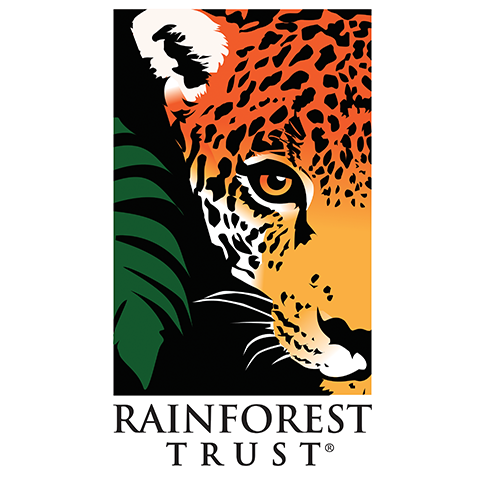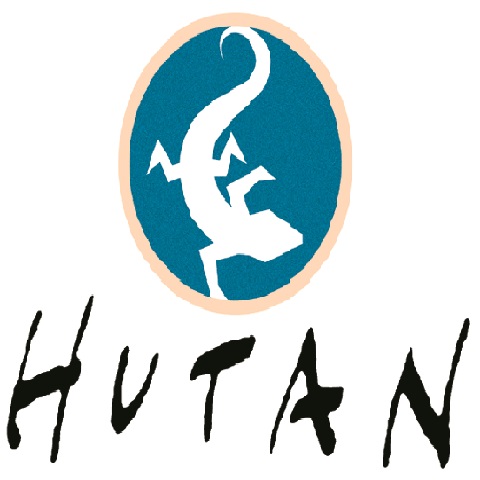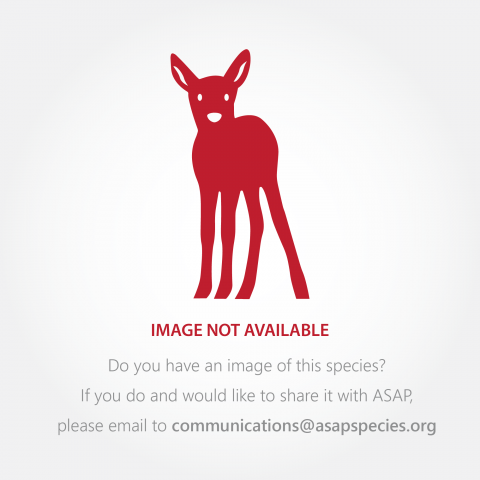Conservation Actions
The Sunda Pangolin is protected by legislation in virtually all its range states, being listed as a protected or totally protected which typically prohibits exploitation. There may be customary laws which permit indigenous peoples to exploit the species for subsistence purposes in some range states (e.g. Malaysia). Exceptions include Brunei Darussalam where the species is not specifically listed as protected but does receive protection under broader wildlife and forestry legislation. In China, the species is a State Category II protected species.
The species occurs in a number of protected areas across its range including Cambodia: Chep (Suzuki et al. 2017) and Pream Krasop Wildlife Sanctuaries (McCann and Pawlowski 2017), Southern Cardamom (Gray et al. 2017a), Virachey and Botum Sakor National Parks; Thailand: Khao Yai and Kaeng Krachan National Parks (W. Sodsai, unpubl. data); Khlong Nakha, Khao Ang Ru Nai and Hala-Bala Wildlife Sanctuaries (Kitamura et al. 2010, ZSL 2017) and the southeastern western forest complex (sWEFCOM) in Kanchanaburi Province (ZSL 2017); Viet Nam: U Minh Thuong, U Minh Ha, Cat Tien, Bach Ma, Pu Mat and Song Thanh National Parks, Saola Reserve (Quang Nam), Khe Net Protected Area, and Ke Go Nature Reserve; Lao PDR: Xe Pian National Biodiversity Conservation Area (NCBA), Dong Phou Veng National Protected Area, Khammouan Limestone NBCA; Malaysia: Pasoh Forest Reserve, Kenyir Wildlife Corridor and Krau Wildlife Reserve, including in Sabah: Sepilok-Kabili Forest Reserve, Lower Kinabatangan Wildlife Sanctuary, Kebun Cina Forest Reserve, Sipitang Forest Reserve, Tabin Wildlife Reserve, Ulu Kalumpang Forest Reserve and Malua Forest Reserve, and Imbak Canyon (Bernard et al. 2013).
Location Information
The Sunda Pangolin is widely distributed geographically, occurring across mainland and island Southeast Asia, from central Myanmar south through western, southeasterrn and southern Thailand, lowland Lao People's Democratic Republic (PDR), central and southern Viet Nam, Cambodia, Peninsular Malaysia and Singapore. It then occurs on Sumatra, Java and adjacent islands (Indonesia), and Borneo (Malaysia, Indonesia and Brunei Darussalam) and surrounding islands. The northern and western limits of its range are poorly known (Schlitter 2005). Wu et al. (2005) note the occurrence of the species in Yunnan Province, southwestern China based on specimens at the Kunming Institute of Zoology, but there is uncertainty over the provenance of these specimens and thereby occurrence of the species in China (Chong et al. 2019). Further details on distribution within each range state are provided below.
Altitudinal limits are not well understood, but in the northern part of its range the species probably does not widely occur above 600 m asl (J.W. Duckworth pers. comm. 2006). Moreover, individuals in captivity north of the Sunda Pangolin’s estimated geographic range have high mortality rates, often dying from exposure due to colder temperatures (Carnivore and Pangolin Conservation Program, unpubl. data). On Borneo, the species has been recorded up to 1,700 m asl at Mount Kinabalu (Payne et al. 1985) and there is a specimen in the Natural History Museum in London from 1,500 m asl. from Lombok, Indonesia (P. Newton, unpubl. data). Kaicheen and Mohd-Azlan (2018) recorded the species at >1,200 m in the Mt. Penrissen area, Sarawak. Despite being present in a number of protected areas (PAs - see the Conservation section) across its range, these are mostly located in poorly accessible areas – either they are at high altitudes or they have steep terrains – meaning they offer limited protection for the Sunda Pangolin, as it is mostly found at altitudes below 1,000 m asl in Indochina, Myanmar and Thailand. It is suspected that the species has been extirpated from some lowland areas of Lao PDR, Myanmar and Thailand, and is highly vulnerable in other lowland areas in these countries as well as Cambodia and Viet Nam.
It appears likely that the detectability of pangolins from conventional large mammal focused camera trapping is low, thus data (or its absence) from camera trap by-catch information may not provide as much value for pangolins as many other species of ground-dwelling mammals in tropical Asia. For example, the Sunda Pangolin was detected from 11 of 65 randomly set-up camera trap stations (across ~8,000 camera trap nights) in the Southern Cardamom National Park, Cambodia, despite no previous records from more than 22,000 camera-trap nights previously in the landscape (Gray et al. 2017a).
This species is distributed in central and southern Myanmar (Salter 1983, Corbet and Hill 1992), but has apparently been eradicated widely from lowland areas due to human agricultural expansion and hunting (J.W. Duckworth pers. comm. 2006). The species has been recorded in the Tanintharyi region in the south (Challender and Waterman 2017). Moo et al. (2017) recorded Manis spp. in Karen State in Myanmar which likely comprises this species. Rao et al. (2005) recorded this species in Hkakborazi National Park in northern Myanmar in the early 2000s but there is uncertainty over the species identification (M. Rao, pers. comm.) and this record may refer to the Chinese Pangolin (Manis pentadactyla).
The species historically occurred throughout Thailand (Lekagul and McNeely 1977, Bain and Humphrey 1982), but, like in Myanmar, has reportedly been lost from most of the lowland areas due to agricultural expansion and hunting/poaching (J.W. Duckworth and R. Steinmitz pers. comm. 2006). Camera-trap data confirms the presence of the species in Khao Yai National Park (ZSL 2017) and there are records from Khao Ang Ru Nai Wildlife Sanctuary (Jenks et al., 2012), Kaeng Krachan National Park (W. Sodsai, unpubl. data), Khlong Nakha Wildlife Sanctuary, and the southeastern western forest complex (sWEFCOM) in Kanchanaburi Province (ZSL, 2017), as well as Hala-Bala Wildlife Sanctuary in the far south (Kitamura et al., 2010). The species occurs also on islands e.g., Ko Ra, Phang Nga Province (GVI, unpubl. data).
Recent research suggests the species is present but rare in central and southern Viet Nam (MacMillan and Nguyen 2013, Nuwer and Bell 2013), however records from these areas vary in reliability. There are older records from Kon Tum Province, Tay Ninh Province and Quang Nam Province (Bourret 1942). Meanwhile, there are more recent records (summarised by Newton 2007) from Ha Tinh Province (Timmins and Cuong 1999), Kien Giang and Ca Mau Provinces (in U Minh Thuong National Park) (CARE 2004), Dong Nai, Bin Phuoc and Lam Dong Provinces (Cat Tien National Park) (Murphy and Phan 2001), Quang Binh (Le et al. 1997a), and Dak Lak (Le et al. 1997b). Recent enforcement activity suggests the species is still present in Dak Nong, Kon Tum, Quang Binh and Gia Lai provinces (L. Fletcher and A. Nguyen, unpubl. data). Based on camera trap data, the species is also present in U Minh Ha National Park (Willcox et al. 2017). Additionally, camera trap records from December 2012 to August 2014 recorded this species in Thua Thien Hue and Quang Nam Saola Reserves in central Vietnam (T. Gray in litt. 2017). The species was recorded in 2013 in Cat Tien National Park (Save Vietnam’s Wildlife, unpubl. data). Surveys using trained detection dogs have recorded the species in Cat Tien National Park and camera-trapping has recorded it in Pu Mat National Park (Save Vietnam’s Wildlife, unpubl. data), though it is unknown whether these were released animals. A Sunda pangolin was observed at night during reptile and amphibian surveys in Pu Mat National Park in 2014 (S. Trageser, pers. comm. 2018) and it has been camera-trapped in Bach Ma National Park (A. Wilting, pers. comm. 2017).
This species was likely widespread in Lao PDR historically. There are records of varying reliability from a wide range of areas below ca 600 m asl. However, it is possible that in Lao PDR the species is restricted to the Mekong plain and adjacent foothills up to c. 900 m asl, with a possible occurrence on the Bolaven Plateau, north from Xe Pian National Biodiversity Conservation Area in the south and at least as far north as Nam Kading (Duckworth et al. 1999, J.W. Duckworth pers. comm. 2006). Nooren and Claridge (2001) reported that populations in Lao PDR have been severely reduced as a result of hunting for consumption and trade. Camera trap data from Nakai-Nam Thuen in 2016 recorded six instances of pangolins at six different stations, however as the range of the Sunda and Chinese Pangolins overlap here, it was not possible to identify the species (Coudrat 2017).
In Cambodia, the Sunda Pangolin has been recorded from sea level to 830 m asl (A. Olsson pers. comm. 2012, T. Gray in litt. 2017) and historically occurred throughout deciduous forest, lowland and mountainous evergreen forest, and secondary forest prior to the extensive hunting driven declines that have likely occurred in the past 10-20 years. Extensive recent (meaning post-2012) camera trapping conducted across many of the country’s protected landscapes has generated very few records of this species (though as noted previously, it is difficult to detect pangolins within general large mammal focused camera trapping). For example, there are no post-2008 camera trap records of the Sunda Pangolin from Cambodia’s Eastern Plains Landscape despite more than 100,000 trap nights and a small number (less than five since 2012) of confiscations by law enforcement teams (R. Crouthers, O. Griffin and T. Gray in litt. 2017). However, there have been two records since 2010 from camera trapping in deciduous dipterocarp dominated areas of Preah Vihear Province in the Northern Plains (Songkom Thmey District, May 2017, G. McCann in litt. 2017, and Chep Wildlife Sanctuary (Suzuki et al. 2017) and one from the evergreen forest in Virachey National Park, Rattanakiri, at 830 m asl (McCann and Pawlowski 2017). The Songkom Thmey record was obtained from proactively investigating a “a small tunnel-like game trail” and further emphasises that targeted camera trapping may be necessary to detect the species. There have been more than 10 camera trap records since 2016 from low to mid (10-500 m asl) elevation evergreen forest in the Southern Cardamom National Park and northern Botum Sakor National Park, Koh Kong province (Gray et al. 2017a). It is worth noting that at least two of the recent camera trap records were obtained from small sites managed for ecotourism. This level of intense benign human activity may be necessary to prevent hunting and it is possible that extinction in most of the country’s large, but insufficiently staffed or managed, protected areas is inevitable. It seems likely that numbers in Cambodia are depressed to such a level, particularly in accessible areas of the country, that detection during most biodiversity surveys is unlikely. Nevertheless, the species remains regularly confiscated by law enforcement teams throughout the country, with a total of 375 confiscations by the Wildlife Rapid Rescue Team between 2001 and 2016 (Wildlife Alliance in litt. 2017). Furthermore, between four and five individuals are confiscated annually in the landscape by the Wildlife Alliance law enforcement teams (T. Gray in litt. 2017). Other recent records (for example, there are at least two from central Phnom Penh since 2014) may involve individuals that have escaped from wildlife trade, rather than representing wild animals (T. Gray in litt. 2017).
The species is widely distributed geographically in Peninsular Malaysia, primarily in forest, but also in gardens and plantations, including oil palm and rubber plantations (Medway 1977, Numata et al. 2005). It is also found on the island of Penang. Numata et al. (2005) and Ickes and Thomas (2003) note its presence in oil palm and regenerating lowland dipterocarp forest in and around Pasoh Forest Reserve, where it was previously considered common. The Sunda Pangolin remains present within oil palm plantations in Selangor and Negri Sembilan, Peninsular Malaysia, based on interviews with plantation workers (Azhar et al. 2013). However, Azhar et al. (2013) also report that in areas where interviews have been conducted, it is in decline from hunting for trade. Additionally, the species is present in Kelantan, Pahang and Terengganu, based on interviews with the Orang Asli hunters (Chong et al. 2016), who also reported that the populations there are decreasing (J.L. Chong pers. comm. 2017). Camera trap data from Kelantan and Terengganu produced just a single record of a Sunda Pangolin, despite an effort of 4,364 and 3,453 nights, respectively (Jambari et al. 2015).
This species is widely distributed on Borneo, including Sabah and Sarawak in Malaysia. It has been recorded in mixed dipterocarp forest and riverine forest (Azlan and Engkamat 2013), as well as remnant forests in this region (Giman et al. 2007). In Sabah between 2010 and 2017, camera trap data revealed Sunda Pangolins in: Maliau Basin and Imbak Canyon (Bernard et al. 2013); Sipitang Forest Reserve; Tabin Wildlife Reserve; Ulu Kalumpang Forest Reserve, Ulu Padas; Malua Forest Reserve, Danum Valley; Sepilok-Kabili Forest Reserve; Lower Kinabatangan Wildlife Sanctuary; and unprotected forest adjacent to Universiti Malaysia Sabah (E. Panjang, unpubl. dataa). It is rarely seen in Sabah, especially compared to 10 years ago (E. Panjang, unpubl. data). Interviews were conducted with local communities and plantation workers living near Sepilok-Kabili Forest Reserve between 2011-2015 and Lower Kinabatangan Wildlife Sanctuary between 2016-2019. Respondents claimed that pangolins became rare about 20-30 years ago. The species is reportedly still found in Kebun Cina Forest Reserve in Sabah (Damit 2009), while data from surveys conducted in 2005 report the species is present at Bintulu, Sarawak (Wilson et al. 2006), though it appears to be absent from the extensive peat swamp forests in this state (Anon 2000). The species does appear as part of the bushmeat trade in Sarawak, especially in markets in Kuching, Sibu and Kapit (J.L. Chong pers. comm. 2017). Kaicheen and Mohd-Azlan (2018) recorded the species at >1,200 m in the Mt. Penrissen area in 2015-2017.
The abundance of this species is understood to be low in the peat-swamp forests of east and central Kalimantan, Indonesian Borneo (S. Cheyne pers. comm. 2012), but otherwise has a widespread distribution in Indonesia on Sumatra, Java, Borneo, Kiau and Lingga archipelago, Bangka and Belitung, Nias and Pagi islands, Bali and adjacent islands (Corbet and Hill 1992), as well as the Great Bunguran Islands (Natuna Islands) on the northwest coast of Borneo (Phillips and Phillips 2018). In Bali, local people report that thirty years ago pangolins would wander into household gardens around Ubud and central Bali, whereas now it is hard to find them. The northern parts of Bali have a slightly higher abundance, but they are very rare today (H. Nash, unpubl. data). There are also records from Tanggamus and Lampung Barat Districts in West Java, where the species was found in secondary forests and plantations, ranging between 360-900 m asl. The species was reported in Brunei Darussalam by Medway (1977), which is supported by the 'rescue' of a small number of individuals in 2013. It is reported to occur in all four districts in Brunei Darussalam: Brunei Muara, Tutong, Kuala Belait and Temburong (Fletcher 2016).
The species is still found in the wild in Singapore and adjacent islands, including Pulau Tekong and potentially, Pulau Ubin (Lim and Ng 2008). Wildlife Reserves Singapore (WRS) receives around 20 wild pangolins per year – over 80% of which have been successfully released back into the wild.
Geographic Range
Extant
Brunei Darussalam, Cambodia, Indonesia, Lao People's Democratic Republic, Malaysia, Myanmar, Singapore, Thailand, Viet Nam
Population Information
There are very little quantitative data on Sunda Pangolin populations at any level (local, national or international), with the exception of Singapore (see below). This species is rarely observed, principally because of its increasing rarity, but also because it is secretive, elusive and primarily nocturnal. There is a paucity of research on population densities at all scales (Willcox et al. 2019). However, population declines are inferred in various places based on the knowledge of local community members and indigenous peoples and from shifting trade dynamics, both legal and illegal. For instance pangolins are now being poached in South Asia (India, Nepal, Bangladesh, Pakistan (Mahmood et al. 2012, Mohapatra et al. 2015), and Africa to meet demand which has been met from Southeast Asia in recent decades, mainly Malaysia and Indonesia (Challender and Hywood 2012, Gomez et al. 2016, Challender and Waterman 2017, Heinrich et al. 2017), following declines in populations of the Sunda Pangolin in the north of its range and Chinese Pangolin (Zhang 2008, Chong et al. 2019)
This species is now extremely rare in the northern part of its range where there have been massive declines in Indochina (Duckworth et al. 1999, Nooreen and Claridge 2001).
It is listed as Endangered in Viet Nam (Nguyen, 2007). In three areas of Viet Nam where interviews were conducted (Khe Net Protected Area, Ke Go Nature Reserve and Song Thanh National Park), 95% of hunters believed pangolins populations have declined severely, because of hunting pressure (Newton et al. 2008). Hunters reported that populations had massively declined in the last few decades, but particularly since about 1990, when the commercial trade in pangolins began to escalate (Newton 2007). In all three areas, the species was described as now being extremely rare. The intense biodiversity survey effort and extremely limited number of confirmed records of pangolins throughout Viet Nam's protected areas adds weight to this observation (see Newton et al. 2008). The rarity of the species was highlighted in more recent research in U Minh Thuong National Park (Nuwer and Bell 2013) and Quang Nam Province (MacMillan and Nguyen 2013).
The species was listed as ‘Rare’ in Cambodia in 2003. There are no population estimates for the country but it is suspected the species is in decline. In a number of reserves in the Cardamom Mountains, this species is present but populations are heavily suspected to be declining. This includes the Elephant Mountains, Central Cambodian Lowland Forests (Prey Long), Eastern Plains Landscape, Northern Plains and Northeast Cambodia. Interviews with hunters suggest that the species is absent in some of these areas, which is attributed to hunting (A. Olsson pers. comm. 2013), and it is likely that these declines have continued since this appraisal.
In three separate areas within the range of the Sunda Pangolin in Lao PDR (Xe Pian, Dong Phou Veng and Khammouan Limestone National Biodiversity Conservation Area [NBCA]), villagers reported in the late 1990s that pangolin populations had declined due to hunting; in some areas, to as little as one percent of numbers 30 years ago, i.e. (since the 1960s; Duckworth et al. 1999, Nooren and Claridge 2001). The species has largely been extirpated from the lowlands in Lao PDR and is being exploited where areas that were not previously accessible are opening up due to development, including the expansion of agro-industrial plantations (D. Willcox, pers. comm.).
In Peninsular Malaysia, the species has previously been described as common in some areas, at least up until 1999 (Ickes and Thomas 2003). It was listed as Vulnerable in Peninsular Malaysia in 2012. Azhar et al. (2013) report its presence in oil palm plantations in Selangor and Negri Sembilan, though it is subject to very heavy hunting pressure here. According to Numata et al. (2005) the species is present in Pasoh Forest Reserve. Based on recent camera trap data, the species is also present in the Kenyir Wildlife Corridor (D.W.S. Challender, pers. comms. 2013) and also as roadkill in Kenyir (J.L. Chong, J. L. pers. comm. 2017). However, interviews with hunters and villagers in 2007 and 2011 indicate populations in Peninsular Malaysia are decreasing as a result of hunting pressure for trade (D.W.S. Challender, unpubl. data, J.L. Chong, unpubl. data). This is supported by results of pangolin hunting frequency and patterns of the Orang Asli in Kelantan, Pahang and Terengganu (Chong et al. 2016).
In Sabah, the Sunda Pangolin has previously been considered relatively common, but there is little recent data on the species' status here. Populations are under pressure from collection for both local use and international trafficking, which seems to have intensified in recent years, and is inferred to be having a detrimental impact on population levels. For example, Pantel and Anak (2010) report that >22,000 Sunda Pangolin were collected for illicit export in the state in an 18 -month period in Sabah between 2007 and 2009. In February 2019, local authorities seized ~30 tonnes of Sunda Pangolins in Sabah, involving frozen animals, live animals and their skins and scales (Anon 2019).
In Sarawak, recent data are lacking, but it is believed that populations are under heavy collection pressure for local use, mostly as Sunda Pangolin meat is favoured as a protein source, but the species is also in trade and it is inferred to be causing a decline in the wild populations (J.L. Chong unpubl. data).
There is a small population in Singapore that might be stable. A recent estimate put the population in the country at 1068 individuals (D. Fung Yu En, unpubl. data). The species is listed as Critically Endangered in Singapore (Davison et al., 2008).
There is no recent data on the status of this species in Myanmar; though seizures involving the Sunda Pangolin in China in recent years infer that trade originated in Myanmar, suggesting populations of this species here are under threat (Challender and Waterman 2017). It is thought the Sunda Pangolin has been lost from lowland areas due to hunting and habitat conversion to agricultural land.
The Sunda Pangolin is considered threatened and is becoming increasingly rare in Thailand (Bain and Humphrey 1982).
Evidence from seizures involving this species attest that it is present in some numbers in Indonesia (including Sumatra, Java and Kalimantan). However, the magnitude of international trafficking originating from Indonesia in the last decade suggests populations here are, or could be, in severe decline. Stating categorically that this is the case is difficult due to a lack of information on past or present population levels, and warrants further research. The estimated generation length of seven years, the indiscriminate nature of poaching and the magnitude of seized trade supports this assertion (Challender and Waterman 2017). For example, there have been seizures comprising 11, 14 and 17 tonnes of Sunda Pangolins between 2000 and 2013, each of which involved several thousand animals, and which likely comprises only a fraction of the trade, based on low detection rates associated with illegal wildlife trade. In Bali, local people report that thirty years ago pangolins would wander into household gardens around Ubud and central Bali whereas now it is hard to find them. Apparently, the northern parts of Bali have higher abundance but the species is generally very rare (H. Nash, unpubl. data).
Threats
The primary threat to the Sunda Pangolin is overexploitation from hunting and poaching, both targeted and untargeted, for local and international use. The latter is largely driven by demand in China and Viet Nam and associated incentives to supply those markets, and involves industrial quantities of live and dead animals and their meat and scales each year (Wu and Ma 2007, Challender and Waterman 2017, Heinrich et al. 2017). In China and Viet Nam, pangolin meat is consumed as a luxury product in high end urban restaurants (as well as more locally e.g., on the fringes of protected areas in Viet Nam), and the scales are used as an ingredient in traditional medicines to purportedly cure skin ailments, improve blood circulation and stimulate milk secretion in lactating women, as well as to treat other illnesses, including cancer (Yu and Hong 2018). Contemporary trade routes are sophisticated and extensive occurring over land and by sea (Sopyan 2009). Heinrich et al. (2017) studied the global pangolin trade and found a mean of 29 new routes each year between 2010 and 2015. Trafficking today follows a heavy international trade historically. According to the Convention on International Trade in Endangered Species of Wild Fauna and Flora (CITES), trade data between 1975 and 2018, trade in this species included ~500,000 animals, which mainly comprised skins that were traded to North America, mainly between 1978 and 2000. However, evidence indicates a heavy, unrecorded, illegal trade involving live animals and scales took place simultaneously, potentially involving an additional 500,000-935,000 Sunda Pangolin (Challender et al. 2015). Challender et al. (2019) estimated that trafficking in Asian pangolins between 2001 and 2018 potentially involved >280,000 individuals, most of which involved this species.
The pervasive snaring throughout South East Asia (Gray et al. 2017b) means Sunda Pangolins, like all ground-dwelling mammals, are at risk of accidental mortality or injuries in most forests across the region. Local use also comprises a threat, though evidence suggests this is now largely forgone in favour of international trade, given the high monetary value of this species (Newton et al. 2008, MacMillan and Nguyen 2013). Hunting and poaching of the Sunda Pangolin may take place to meet subsistence needs and the ultimate driver is absolute or relative poverty, though in some areas poaching appears to be opportunistic and undertaken by hobbyists as well as organised criminal syndicates (Pantel and Anak 2010). It is compounded by the ease with which the species can be captured once found, ineffective and insufficient enforcement in most range states and a lack of resources dedicated to conservation efforts. It is thought that icreasing demand combined with a decreasing supply of Sunda Pangolins has resulted in poaching in areas that were previously considered too costly and inaccessible for hunting.
This species is known to be harvested for international trade in both live animals and scales in Myanmar, as evidenced by seizures in China (Challender and Waterman 2017). Myanmar, on the basis of its geographic position, size and weak government, has emerged as an important transit country for the smuggling of pangolins to China; although the origin of pangolins is often unclear, trade seems to comprise a mixture of pangolins from Myanmar and neighbouring countries (Nijman et al. 2015). The northern Myanmar region has been identified as a potential transit and source place for the illegal trade of pangolins and their scales (Zhang et al. 2017).
The population in the southern part of Thailand has crashed because of trade and in the last few years many pangolins have been confiscated from illegal traders (Challender and Waterman 2017). This species is hunted by specially trained dogs, which can smell it out, making hunting much more effective. Habitat loss, often in the form of deliberate and accidental burning of forests, constitutes a secondary threat to the species here.
In Cambodia, the threat to the Sunda Pangolin from hunting and poaching is increasing due to rising prices, and loggers are expending more effort hunting pangolins due to a decrease in luxury wood in the forest (A. Olsson pers. comm. 2013). Pangolins are also often hunted using trained detection dogs and certain villages (e.g., those around Botum Sakor National Park, Koh Kong) are known to specialise in training and deploying such dogs (T. Gray in litt. 2017). In protected areas in the Northern Plains complex, local villagers are financially rewarded for simply reporting pangolin signs to local traders and middlemen (A. Suzuki in litt. 2017).
In Lao PDR, interviews with villagers in the 1990s suggested populations had declined by up to 90% within a decade (i.e., between the 1980s and 1990s; Duckworth et al. 1999), though there is a lack of hard data supporting this (J.W. Duckworth pers. comm. 2006). Consequently, trafficking in the last decade (2009-2019) has originated or been exported from Malaysia and Indonesia, and is destined for China, based on seizure data (Challender and Waterman 2017). Both Lao PDR and Thailand play a key role as transit countries in regional trade involving live animals. Lao PDR is being exploited as a low-risk transport hub for illegal wildlife goods, including pangolins. Lao PDR’s weak laws and ineffective enforcement allow pangolins from both Asian and African countries to be shipped through the country and into consumer countries, such as China and Viet Nam. Between 2010 and 2015, Lao PDR was involved in a total of 43 reported trafficking incidents, in which it was either a seizure (2.3%), origin (32.6%), transit (44.2%) or destination country (23.3%). Thirty-three incidents (76.7%) exclusively involved Asian countries (meaning they did not involve African or non-range countries), and accounted for an estimated ~3,015 pangolins. Based on seizure data from (2010-2015), Asian pangolin species are often smuggled from Indonesia or Malaysia into Lao PDR through Thailand and involve both live and dead or frozen pangolins (Gomez et al. 2016, Challender and Waterman 2017).
Eighty-four hunters in Viet Nam were interviewed and every one reported that they now sell all pangolins that they catch (Newton et al. 2008). Prices are so high that local, subsistence use of pangolins, for either meat or their scales, has completely halted in favour of selling to the national or international trade (MacMillan and Nguyen 2013, Nuwer and Bell 2013). The only occasions on which a hunter might eat a pangolin is if it is already dead when they retrieve it from a trap, then they would use the meat and sell the scales (P. Newton, pers. comm.). The price per kg of pangolin, paid to hunters (in Viet Nam at least) escalated rapidly in the decade up to 2007 and since the commercial trafficking in pangolins began to expand in about 1990 (P. Newton pers. comm.). The main threat in Viet Nam remains hunting therefore, including taking pangolins caught as non-target species. This species is in demand in urban centres such as Hanoi and Ho Chi Minh City both for meat – a luxury product – and scales, and which is attributed to increasing affluence following economic reforms in the late 20th century. Viet Nam is a persistent consumer market in Asia for wildlife species and this is a key factor in the decline of the species in Viet Nam and surrounding regions (Shairp et al. 2016). After two decades of rapid economic growth, newly wealthy consumers are purchasing wildlife to advertise their status, including luxury wild meats the price of which is usually associated with the rarity of a species and its wild origins. Pangolins are often the most expensive meat on the menu in Vietnamese restaurants (Challender et al. 2015, Shairp et al. 2016).
Malaysia has been experiencing targeted hunting and poaching almost exclusively for international trade in meat and scales in recent years and though this includes foreigners, it mostly involves Malaysian nationals. Reported price increases have acted to create a strong incentive to poach and enter the species into national and international trafficking (Pantel and Anak 2010, Chong et al. 2016). This is attracting poachers from outside the country (J.L. Chong, unpubl. data). Increasing land conversion for palm oil throughout Malaysia has created easy road access for poachers. The longevity of palm oil cycles (i.e. the removal of old palms and the replanting of new, which occurs on average every 25 years, suggests that where this species does persist in these habitats (Chong et al. 2016), it may not be viable in the long term, though further research on such dynamics is needed. Malaysia also plays a key role as a transit country for the movement of pangolins, mostly live individuals and meat, from Indonesia to China (Challender and Waterman 2017).
Indonesia has been illegally exporting large numbers of live pangolins as well as meat, especially since 2000, some of which comes from east Kalimantan (Sopyan 2009). Targeted hunting and poaching is the biggest threat in Indonesia, especially on Sumatra, Kalimantan and Java, as evidenced by seizures involving several thousands pangolins over the last two decades (Pantel and Chin 2009, Sopyan 2009).
In Singapore, roadkill is seemingly the biggest threat to this species and though poaching does occur here, it is not thought to be a significant problem.
Secondary threats include habitat loss, largely driven by commercial operations, such as logging, mining and hydro-power dams, and the construction of roads, which has facilitated hunting and poaching by opening previously inaccessible areas. Across Lao PDR, Cambodia and Indonesia this has occurred even within protected areas. The conversion of primary forest to agricultural land is a major driver of habitat loss. This is particularly common in Malaysia and Thailand with habitat replaced with large-scale oil, rubber and paper and pulp plantations. The severity of the threat from habitat loss is not well understood given the species' ability to survive in modified landscapes. However, the ability of the species to persist long-term in habitats such as oil palm and rubber plantations is unknown and commands research attention.
Partners
IUCN Red List Account Link
Please click here to see the species' IUCN Red List Account page.Photo Credits
Nguyen Van Thai (category image)
Roland Wirth (featured image)




















